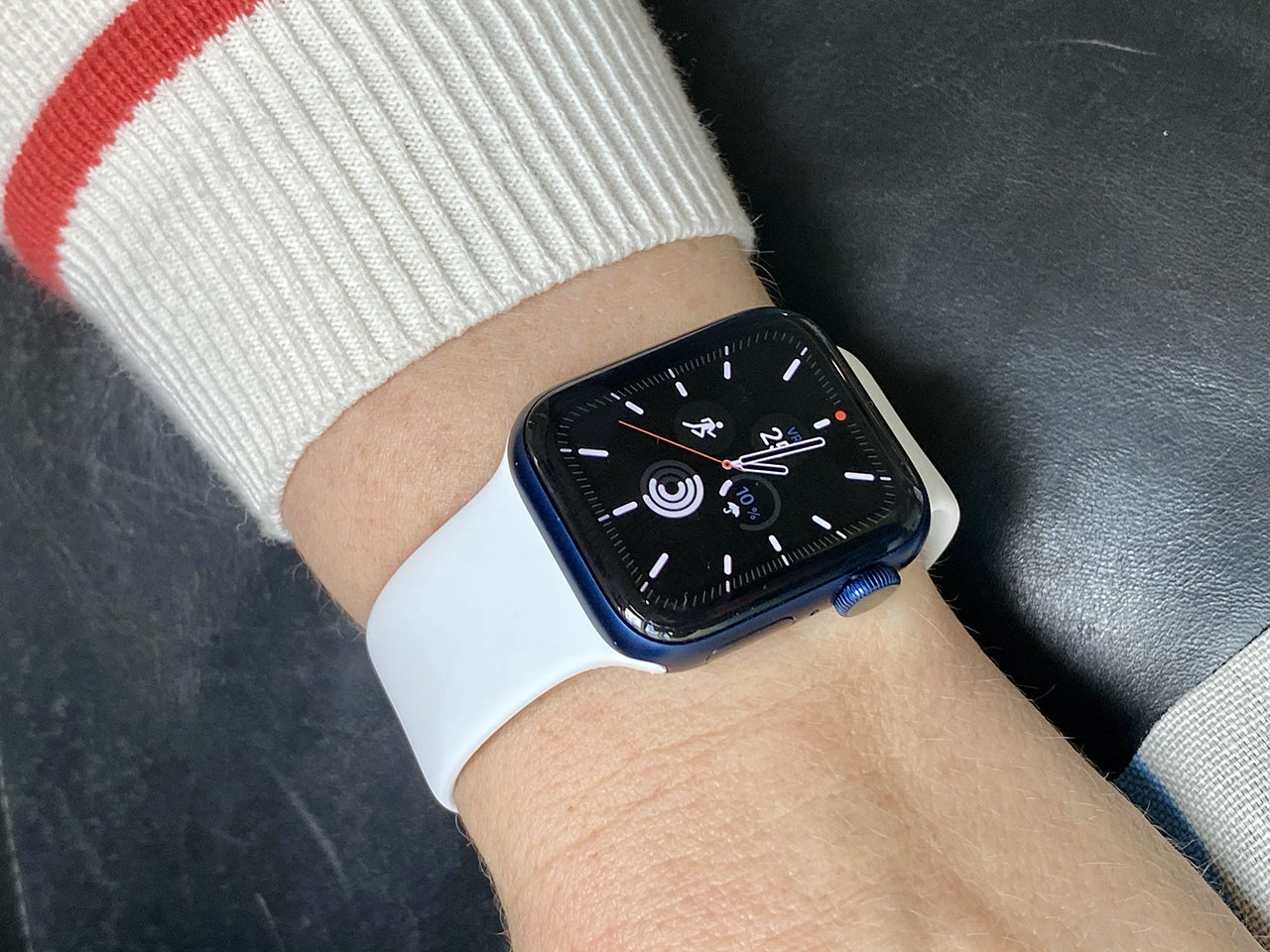Review:Apple Watch Series 6 – in this review of the Apple Watch Series 6 , we discuss all our experiences with this Apple Watch. How do you like the pulse oximeter and the improved always-on screen and has the performance really improved? You can read it in this Apple Watch Series 6 review!
The biggest innovation of the Apple Watch Series 6 is the possibility to measure the amount of oxygen in your blood, the so-called saturation (SpO2). Also new are the brighter always-on screen , an always-active altimeter and a faster chip. While other manufacturers are trying to make big leaps forward, Apple has such an edge that small improvements can help keep it in the lead. And you will notice that with this Series 6: the improvements are not spectacular, but this is the best smartwatch you can currently buy.
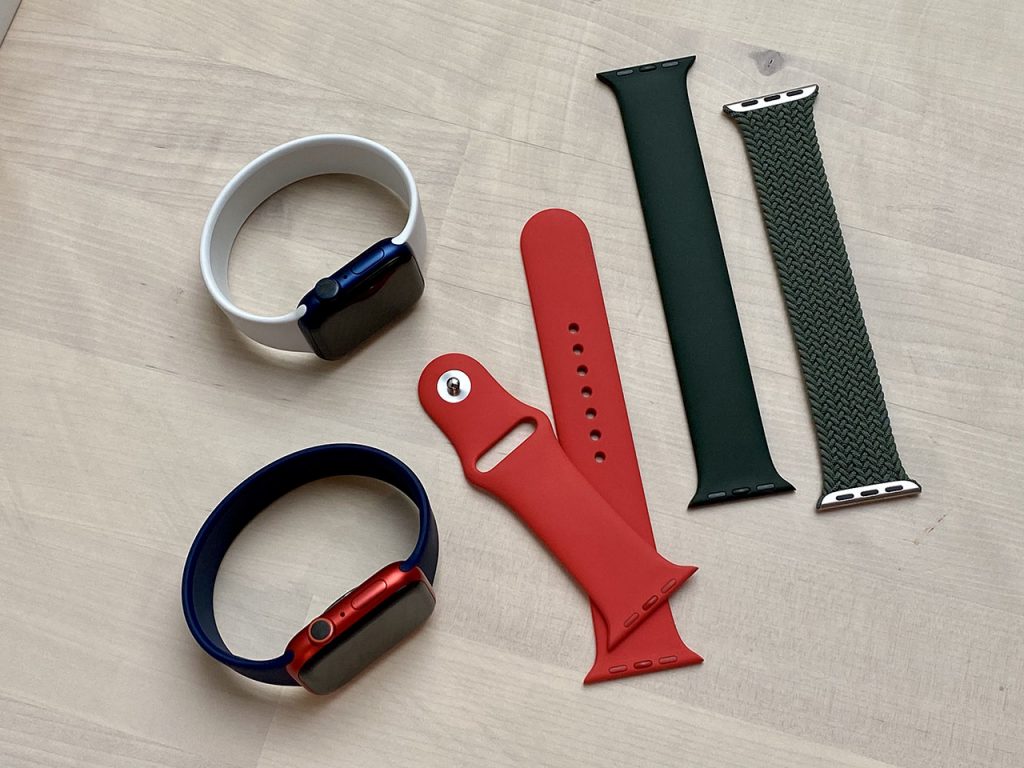
Introduction of Apple Watch Series 6
Yes, the Apple Watch Series 6 is the best smartwatch you can buy.
We do not say this out of blind fanaticism, but because the competition simply cannot keep up. The performance, the user experience, the huge choice of apps, the ease to use: Apple has perfected this to the extreme and there is no manufacturer that comes close. Everything is so simple that you would be crazy as an iPhone user to buy another smartwatch. The biggest competitor Fitbit would still have a chance, but does not disqualify itself with Apple’s HealthKitto work together. While testing the Series 6, I wore a Fitbit Sense on my other wrist and it showed how easy it is to do everything on an Apple Watch. You can easily do the blood oxygen measurement by opening the Saturation app and pressing the start button. No manual needed and within a minute I had my first measurement. At Fitbit, I had to google to find out that you need to set a special clock face for it (via the Fitbit app on your iPhone).
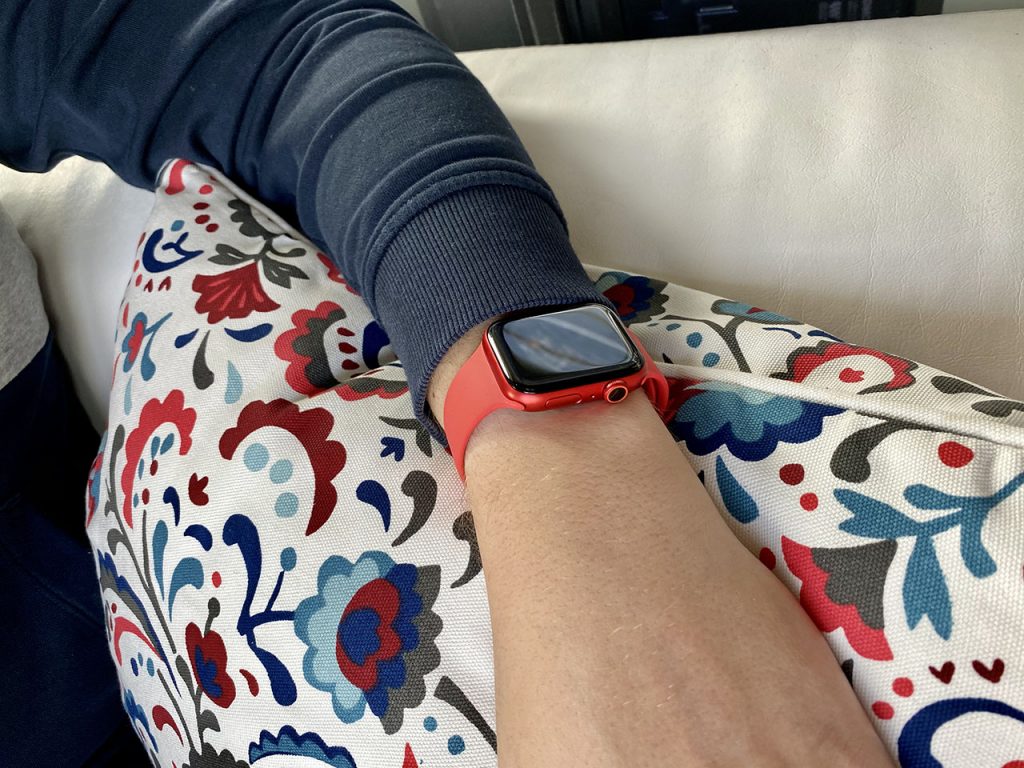
It will of course be different if you use a different brand of smartphone and names such as Amazfit, Samsung and Xiaomi sound attractive. In any case, they are a lot cheaper, because Apple is of high quality, but you also pay for it. That is why we are happy that Apple is offering a cheaper alternative this year: the Apple Watch SE. A review of this will follow, because in this review we focus on the user who wants the best and the latest. And then you automatically end up with the Series 6.
Design Apple Watch Series 6: unchanged
- New colors of blue and red
- Available with new type of straps
- Design unchanged from Apple Watch Series 4 and 5
- Still available in 40 and 44mm
- A rounder finish is not boring
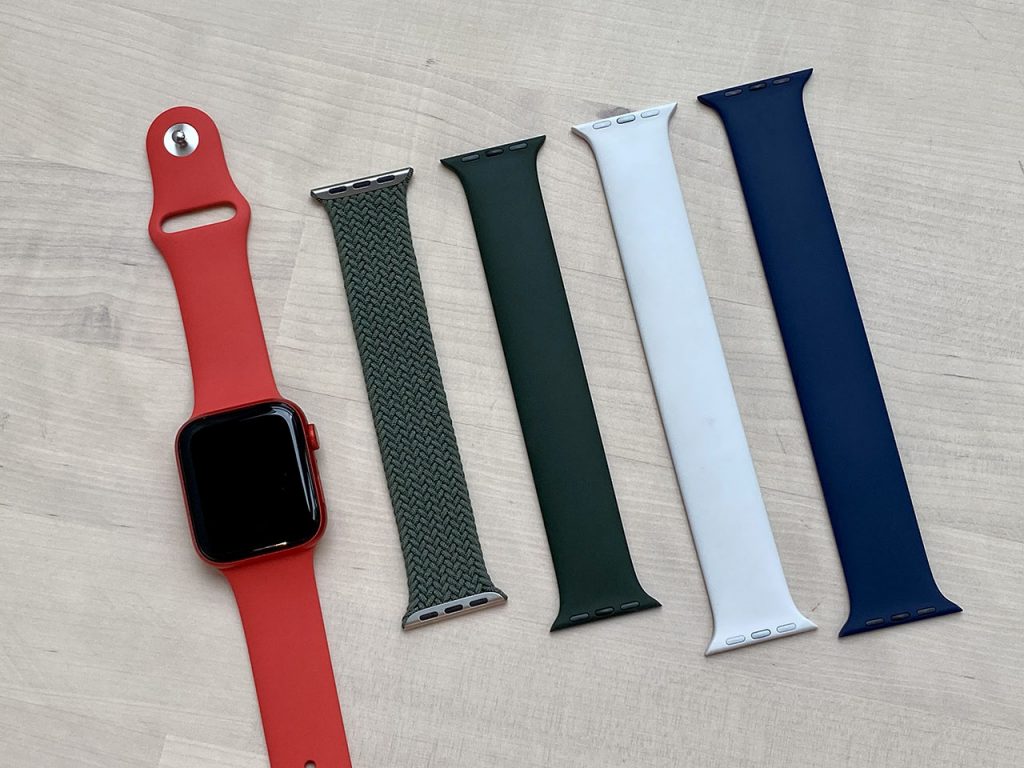
The Apple Watch Series 6 looks like the previous models: a square with rounded corners, a Digital Crown and a flat button on the side and interchangeable straps you can use with all previous generations.
The Series 4 was redesigned with a larger screen and a more compact housing and this Series 6 is based on that. New is that this year you can choose two new colors: a muted color dark blue and a bright color (PRODUCT) RED. We are a fan of these new colors because you can really make a statement with them. But they are more difficult to combine with your existing collection of watch straps. Anyone who prefers to wear the same strap every day will be fine with the brighter colors. If you change daily, it becomes a bit more puzzling to choose a suitable color. So keep that in mind, because while you can still use an all-covering cover with the iPhone if the color does not like it over time, it is a lot more difficult with the Apple Watch.
The existing colors space gray, silver and gold also still look great and are a bit easier to combine.
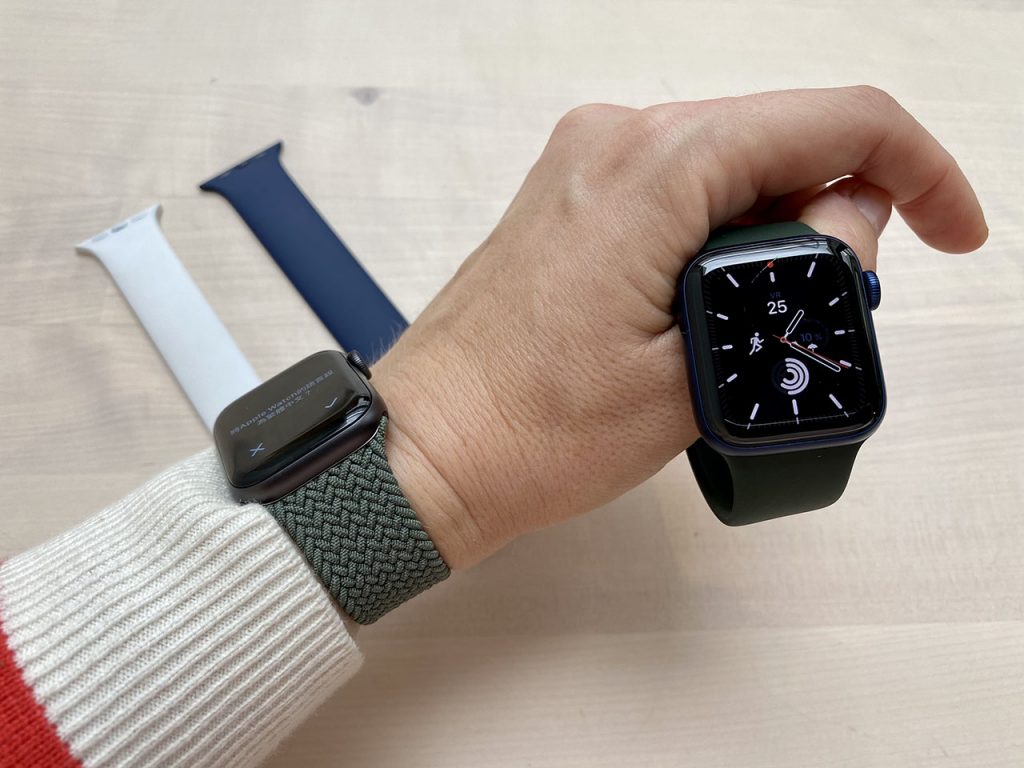
If you get your Apple Watch abroad, you can also choose from two new stainless steel colors: graphite (formerly space black) and gold. The latter must give the appearance and shine of gold, without the real gold being used. Those who like the bling look can consider this, but you will immediately end up with a much more expensive 4G version, of which you cannot even use the 4G function. You can also choose two shades of titanium again.
The real improvements are subtle. You can choose 40mm or 44mm just like before. The buttons are still in the same place and feel robust and the operation is just as intuitive. Two other features have been around since Series 0: the watch straps and the magnetic charging disk. This watch strap system has proven to be a success, which is why Apple will not easily deviate from it. It is easy to change the strap and the choice is enormous. We really have nothing more to be desired: as long as Apple ensures that the old straps continue to fit, we are content.
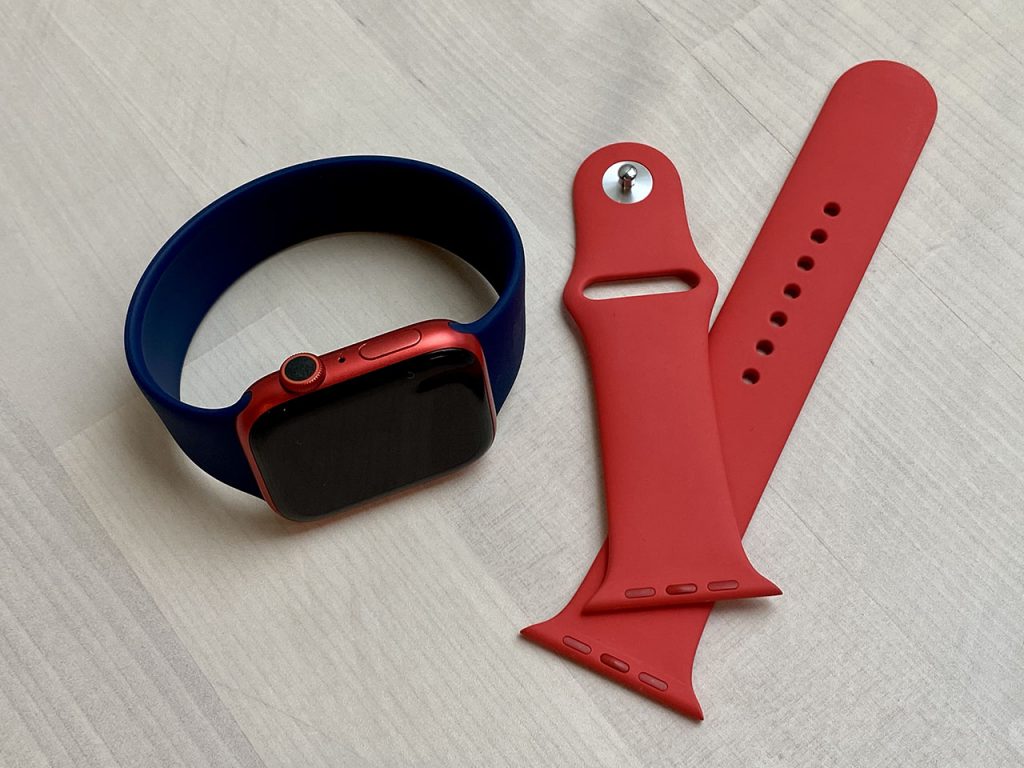
As far as the charger is concerned, we do have a wish: it would be nice if Qi is finally supported, so that you can also use regular wireless chargers. Yet we prefer to see this than the constantly changing chargers that Fitbit knows how to come up with.
At the back you will find the charging points of the Apple Watch. But it is also the place where you can distinguish an Apple Watch Series 5 from a Series 6. The 2020 model features new sensors with red lights. There are now eight in total: four red and four green. It’s amazing how Apple has managed to fit twice as many lights in the same limited space. The housing has not become thicker, but a fraction thinner.
Versions Apple Watch Series 6: still no 4G
- In the Netherlands and Belgium only aluminum
- 4G versions in stainless steel and titanium
- Apple Watch Nike + also available
Apple offers several models in countries where this is supported: the GPS version (which we also have in the Netherlands and Belgium) and a 4G version. Because we still do not have providers in the Netherlands and Belgium that support 4G on the Apple Watch , these models are not available from us. And that is very unfortunate, because eSIM is now available at the three major providers and it would be nice if we had more choice. Random countries such as Sweden and Romania already have it.
Below is a map of current European countries where the Apple Watch 4G is available:
What strikes us is that the Benelux and Portugal do have the eSIM for the iPhone, but not yet for the Apple Watch. These countries were the last to receive Apple Pay , and are still lagging behind. Ireland does not yet have eSIM at all, not even for the iPhone .
The Dutch providers tell us that a so-called entitlement server from Apple is needed to support the Apple Watch 4G . We have made inquiries with Apple in the Netherlands and received the answer that it is not known there either.
With Apple Pay , the Netherlands turned out to be a ‘difficult case’ due to the low costs of payment traffic. But with the 4G version of the Apple Watch, we can’t really imagine what’s holding it back. With the support for 4G, we also get the option to choose stainless steel and titanium.
Fortunately, you can opt for the Apple Watch Series 6 Nike + in the Netherlands and Belgium and that is a great choice if you do not go for the bright colors. You get more dials and special straps at Nike +, while the price is the same.
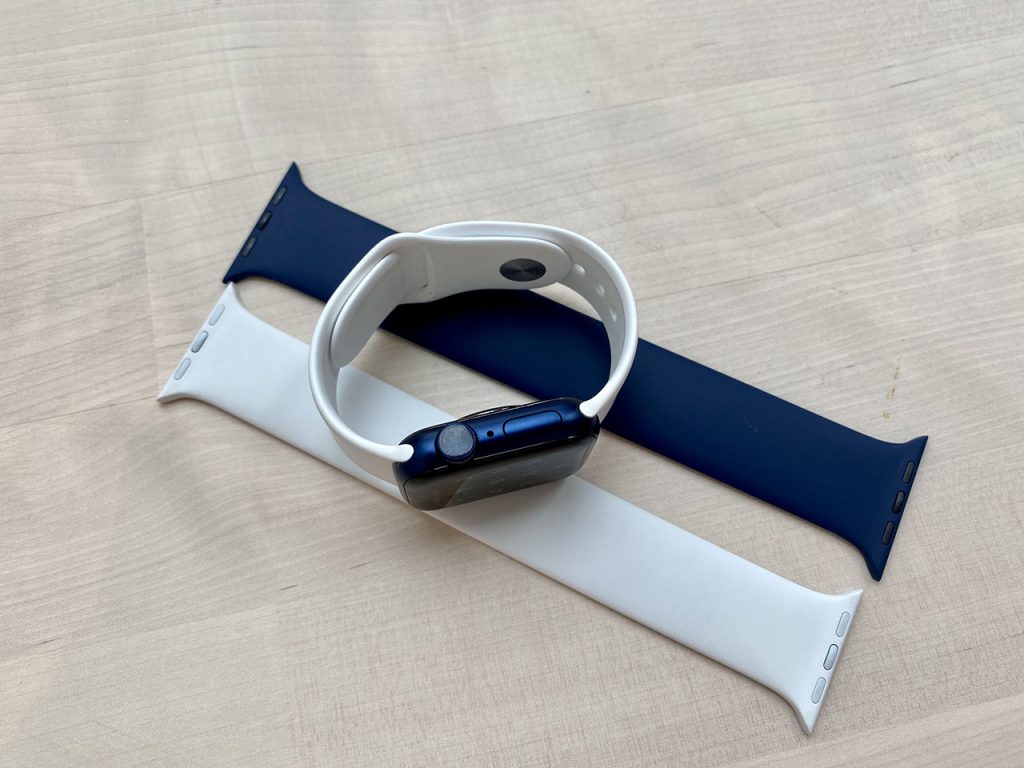
The new Solo bands
We also have to talk about the tapes. You can now order an Apple Watch in combination with the new Solobandje. Of course you can also buy the strap separately without upgrading your Apple Watch.
The Soloband is an elastic band in one piece, without closure. We have found that choosing the right size can sometimes be a problem, and we are pleased that Apple has relaxed its policy on exchange . It would have been even better if Apple had introduced this strap at a time when the Apple Stores are back to normal, so you can fit different sizes in peace.

Apple Solobandje for Apple Watch
Read our experiences with the Soloband for the Apple Watch here. This is a new type of strap without clasp that raises many questions. In this review we try to answer them all.
We are happy with every new addition, but it is not a band that we will order a whole range of colors every quarter. I find the Solo band a bit too ‘complicated’ due to the different sizes. If it is really the case that the band stretches over time, it may become too loose over time and you will need to get a new band. Because of the price of € 50 you don’t just buy a few new ones. We saw them on AliExpress for € 1.50, but they are of course of much lower quality. I prefer to buy fewer straps, but the original ones. I only fear that the Solobands will become a disposable product that you can no longer use if they no longer fit properly.
I also think putting on the Sololoop is a bit too much of a hassle: you will have to squeeze your hand through a narrow opening every day and that just doesn’t feel good. After a while I wondered: what was wrong with the regular sports band again? You can exchange them more easily with roommates and friends, or give them away or sell them if necessary. The dimensions of the Sololoops will ensure that more straps than ever are left unused in a drawer.
Apple Watch Studio: choose your own combination
Last year, Apple introduced the Apple Watch Studio for the first time. This gives you the opportunity to choose your watch strap yourself. If you buy your Apple Watch at stores such as Coolblue and Bol.com , you only have a choice of models with an identically colored standard sports band: space gray with black, silver with white and red with red.
The blue combination looks beautiful and is highly recommended to us. But if you want more choice of watch straps, then you have to go to Apple. You can combine your Series 6 with any Solo band, Sport band or leather band.
There are, however, a few unnecessary, artificial restrictions with Apple Watch Studio . For example, you can only combine the red Apple Watch with red straps and with the Apple Watch Nike + you are attached to the Nike straps with holes or Velcro.
With Apple Watch Studio you can put together your own smartwatch
With Apple Watch Studio you can choose which watch case and which strap to combine. This creates thousands of combinations. It is only available in the Apple Store, not other stores.
Apple Watch Series 6 screen: improved always-on
- Always-on screen, just like on Series 5
- Screen for always-on is 2.5 times brighter
- Maximum brightness from 200 to 500 nits
- Still OLED screen
The two biggest improvements in the Apple Watch Series 6, as far as I’m concerned, are the saturation measurement (more on that later) and the improved always-on screen. If I had to choose, I find the latter the most useful. This is useful at any time of the day, while you may hardly be checking your blood oxygen after initial enthusiasm.
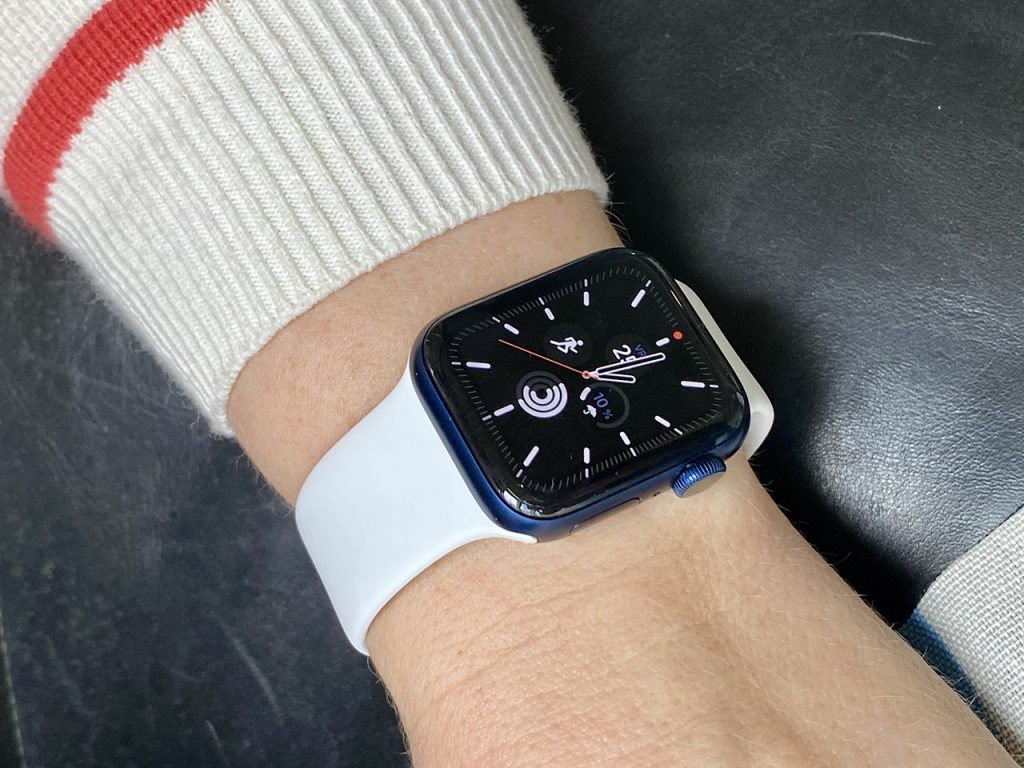
On my Series 5, I turned off the always-on screen after a while because I found it annoying. As far as I am concerned, the screen can be on or off, but not something in between that I cannot read properly. And the gradual lighting up took me just a little too long. I prefer to have it on or off completely, so that it is clear when I can start reading the screen. Always-on also had a significant impact on battery life.
The Apple Watch Series 6 is different: now I use it! The always-on screen is 2.5 times brighter when the watch is idle. As a result, you no longer have to squint to see what time it is. Also nice is that you can operate a few functions on the screen when the Apple Watch is in the dimmed position.
It does mean, however, that you also have a slightly more illuminated screen in bed. Whoever finds disturbing is the best for a dark night setting dial (which can automatically!) , The use Sleep app or enable Theater Mode .
Always-on still has an impact on battery life, but Apple has ensured that despite the brighter always-on screen, there is still an 18-hour battery life.
There were enough rumors about Micro LED last year, but Apple still opts for OLED for this model as well . Fine in our opinion, although of course we would have liked to sniff some new screen technology again. After all, according to rumors, Micro LED will also come to the iPhone and iPad .
Incidentally, outdoors in bright sunlight, no distinction can be seen between the screens. The Series 5 is just as easy to read in the sun as the Series 6, so you don’t have to.
Saturation
- Measure oxygen levels in your blood
- Possible thanks to new red LED and infrared lamps in Series 6
- Third-party apps can read the data
Measuring oxygen in your blood should be the reason to buy the Series 6. But it is not a medical function like the ECG measurement and Apple therefore emphasizes that the saturation measurement is only intended for wellness and recreational use. A doctor cannot diagnose it.
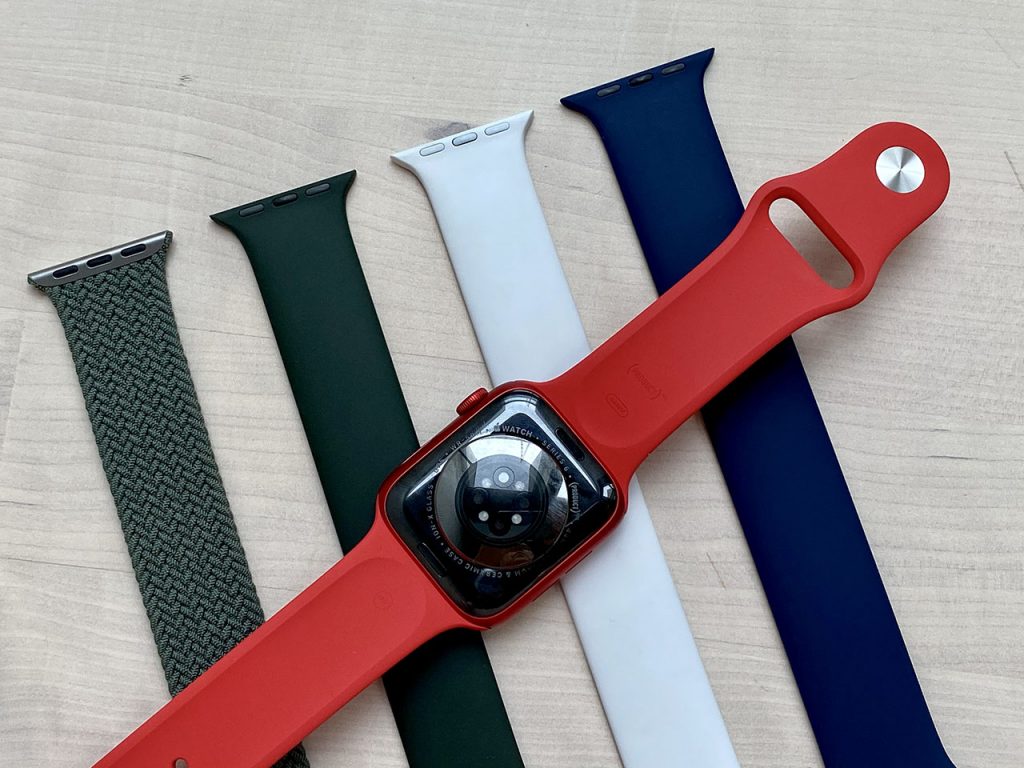
The pulse oximeter uses a series of red LED lights on the back of the watch case that can measure your SpO2 level. This can be done manually, at any time. But you can also have the Series 6 measure automatically at night if you lie still enough. The measurement then takes place approximately at intervals of half an hour or hour.
In the beginning my measurements varied quite a bit, between 93% and 99%. In recent days it has become more constant around 96% and 98%. Apple does not indicate what normal values are, but you can read all over the internet that the value should preferably be between 95% and 100%.
The measurement is quite simple: you open the Saturation app, press the start button and get a measurement 15 seconds later. You can also see what was measured at night in the Health app .
To check how reliable the measurement is, we compared the also brand new Fitbit Sense and the Medisana PM 100 Pulse Oximeter. The PM 100 is certified as a medical device according to MDD (Medical Device Directive). This is also recommended by general practitioners and costs around 40 euros. You can therefore assume that this device will deliver reliable measurements. You put your finger in the device and receive a new measurement of your heart rate and SpO2 value approximately every 15 seconds.
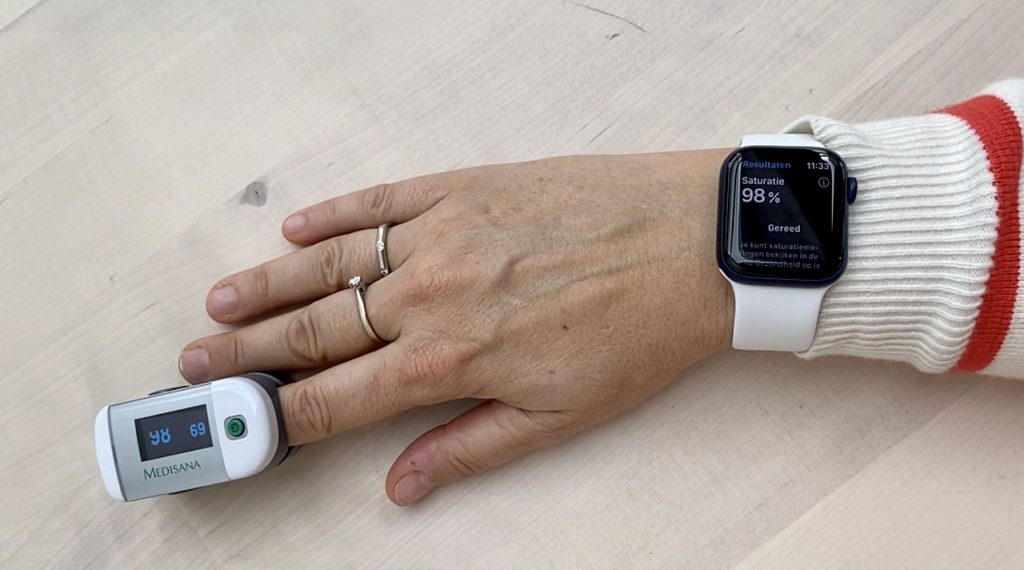
Both meters (Apple Watch and Medisana PM 100) always indicated the same values, so that is reassuring. Measuring SpO2 with the Fitbit Sense is a bit more complicated: you have to install the special SpO2 clock face and you only get measurements while sleeping. Just taking a spontaneous measurement such as with the Apple Watch or the special devices is therefore not possible.Watch Here
Blood oxygen meters measure the saturation of oxygen in your blood. Values lower than 95% can indicate underlying health problems such as sleep apnea and lung disease. In itself, SpO2 is an important value: after an accident, not only blood pressure and heart rate are looked at in the emergency room, but also the saturation value. Only in that case the Apple Watch is of no use, because the values are not intended for medical use.
When comparing measurements between the different devices, the Apple Watch turned out to be accurate enough. I think it is mainly a matter that Apple has not yet finalized approval from the various authorities. This may follow later.
Nor does Apple suggest in any way that you can detect corona with SpO2 measurements. If you are recovering from a lung condition, you would (for ‘recreational use’ of course) keep an eye on the measurements taken at night to see if things are going in the right direction. In such a case I would buy a medically approved meter to take regular measurements, but I would not buy a Series 6 specifically for it.
Apple is not the first to install an SpO2 meter (Samsung and Huawei also have it), but it does make it very user-friendly. Other brands also use red and infrared lights, but often take 20-30 seconds. The fact that Apple is also doing it unnoticed is in line with the company’s philosophy that the Apple Watch also keeps an eye on your health in the background and, for example, warns you about irregular heartbeat.
The sensor shines with a combination of red LED lights and infrared lights on your skin and photo diodes then catch the light that is reflected on the bottom of the Apple Watch. The sensor can determine the color of your blood based on this. This is an indication of the amount of oxygen. Bright red blood contains more oxygen.
The SpO2 measurements can be affected by two factors: physical conditions or environmental factors (thin air). Apple obviously emphasizes the latter: less oxygen in the air because you are on a mountain means that your body has to make more effort to absorb oxygen. That in turn can affect your (sports) performance.
There is a chance that you will use the pulse oximeter a few times and never again, as was the case with the ECG meter for me. Therefore, think carefully whether you need it – because you do pay for it. Certainly because it does not yet provide any reports or advice and cannot be used for diagnoses. Apple has started three studies with research institutions to see if there is a link between SpO2 and asthma, heart failure, lung disease, flu, COVID-19 and the like. Also in the Netherlands a study in hospitals has started with the Series 6 . The results are still waiting.
One last point of attention: the saturation measurement is not available if you are using Family Configuration . Apple has turned this off for some unknown reason, while it can be useful for elderly or dependent family members. For the Dutch and Belgians, this problem is currently not so current, because you cannot use Family Configuration in our countries at all.
Altimeter
- Continuously active altimeter
- Can be found in Compass app
- Can also be consulted as a complication on the dial
Apple added a compass to the Series 5 , and Series 6 now includes an always-active altimeter. There is a very specific target group that benefits from this: athletes who, for example, like to train on hills or do their training at great heights. They can therefore immediately use the pulse oximeter to see to what extent the amount of oxygen in the blood has dropped.
If you’ve never used the compass, chances are you don’t need an always-active altimeter. If you do belong to the target group, you can view the altitude via the Compass app or via a complication on your watch face. You will then continuously see how high you are above sea level, although a certain clearance is indicated, for example +/- 5 meters.
At our office on the 5th floor, the app indicated a height of 3 meters (+/- 5 meters) and in another building on the 4th floor, the height was also 3 meters. That could be true if Amsterdam is far below sea level, but that is not the case (4 meters below sea level is closer). You probably only benefit from this if you go climbing and sports hiking in mountainous areas.
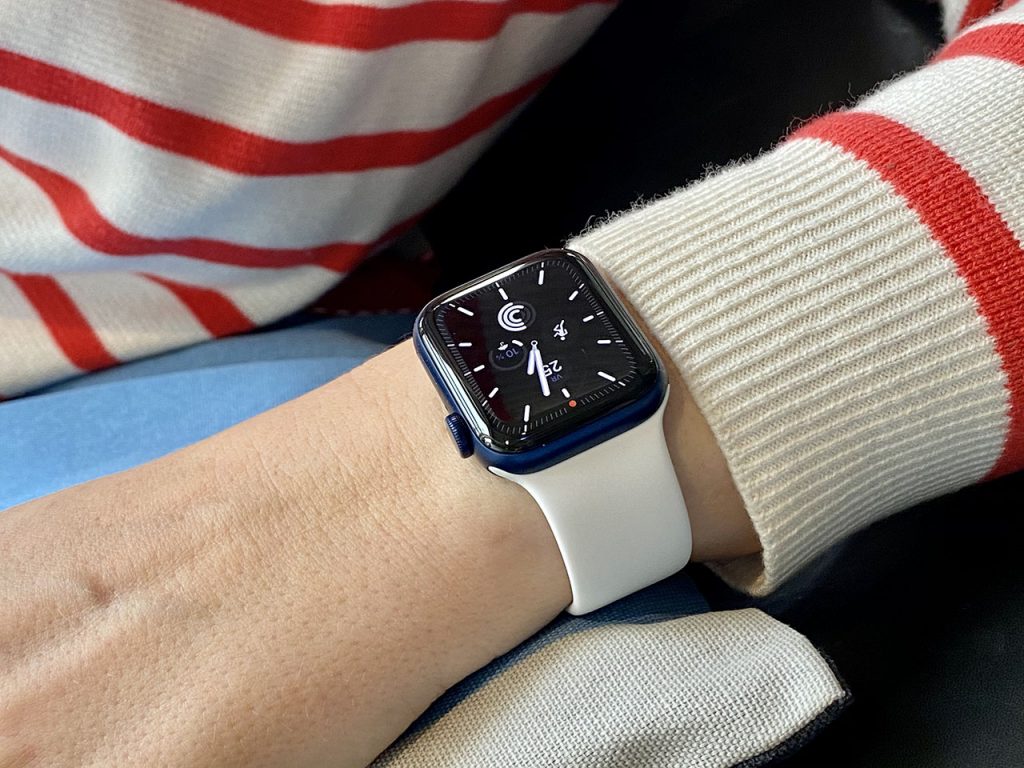
Performance Apple Watch Series 6
- New S6 chip is faster
- Same amount of storage as Series 5: 32GB
- U1 chip for Ultra Wideband
Last year, the Apple Watch got a refreshed S5 chip, which, however, did not offer improved performance. This year, Apple put the S6 chip in the Apple Watch and we can expect more of that. This chip ensures that you can charge faster and that apps start up more smoothly. The first was clearly noticeable during our test, the second was not.
Thanks to optimizations in watchOS 7, every Apple Watch feels faster, even if you have the Series 3 . This chip also ensures that the always-on screen is now 2.5 times brighter when you are not looking at the screen.
The Apple Watch Series 6 feels fast, but that’s also the case with our Series 5, which features watchOS 7, so this doesn’t seem like a reason to upgrade. The main reason for choosing the latest model is that you still have some space left in terms of processor power so that you are prepared for future updates. Apple’s chips are so far ahead of Qualcomm’s competition that Apple could have used the chip in Series 5 as well and no one complained about it.
The S6 processor is more energy-efficient, so that despite the much brighter display of the always-on screen, you still keep the same battery life of 18 hours.
The amount of storage has remained the same: 32GB. In previous years we sometimes wondered why an Apple Watch needed a lot of storage at all, but the installation problems with watchOS 7 on the Apple Watch Series 3 have made it clear that it is better to have a bit more spacious in your storage.
Also new is the U1 chip, which you also find in the iPhone 11 . It is the first time for Apple to use this in an Apple Watch and it is needed for Ultra Wideband applications . You can’t do anything with it right now – Apple has yet to reveal the real applications. But it may serve as a kind of GPS indoors, to be able to determine location and direction very accurately. The U1 chip is also expected to come to the AirTag .
Battery life Apple Watch Series 6
- The same battery life of 18 hours
- Brighter always-on screen has no impact on battery life
- Fast charging: full charge in 90 minutes
- Charge from 0% to 80% in 60 minutes
Current Apple Watch models come with a magnetic charging cable, but you don’t get a plug anymore. This was done for environmental reasons and it is something we have no problem with. If you regularly buy Apple products, the 5 Watt adapters pile up, while in the meantime you also buy a lot of fast chargers and wireless chargers. We really don’t need any more chargers.
It does not mean that Apple has lowered the price of the Apple Watch, but given the cost of the adapter (one euro?) It will not have much of an impact on production costs.
The Apple Watch Series 6 keeps the same 18-hour battery life, which means you’ll still need to charge regularly. Still, my charging behavior has changed somewhat with the arrival of watchOS 7. Instead of putting it on the charger every night while I sleep, I started wearing the smartwatch at night. This has to do with the new sleep functions and the fact that I wanted to test the automatic saturation measurements. In between, I charge the watch, for example just before going to sleep or when I am taking a shower. Half an hour turns out to be enough to get from 40% to 80%, for example. As far as I’m concerned, that’s all, unless I’m away from home for a whole weekend without access to an electrical outlet (which actually never happens).
Charging from 80% to 100% takes a relatively long time and is often unnecessary. I have noticed the same changed charging behavior with the iPhone: I charge it when the battery drops below 20%, but it is no longer on the charger every night by default.
To give an impression of the battery consumption in bed, it is about 20 percentage points. If your battery status is 65% at bedtime, it will be about 45% when you wake up.
Last year, Apple improved the chip to keep battery life the same, despite the introduction of always-on and the improved LTPO display. This year the focus is on maintaining the same battery life. The extra energy wasters are now the brighter always-on screen and saturation measurements.
Compared to the competition, Apple will not win any time soon. An 18-hour battery life is nothing compared to the 5 to 6 days that a Fitbit lasts. The Huawei Watch GT2 Pro even lasts for two weeks on a battery charge.
Apple Watch Series software 6
- Comes standard with watchOS 7
- Requires at least iPhone 6s or iPhone SE
- Numerous new functions, which can also be used on the Apple Watch Series 3 to 5
The Apple Watch Series 6 comes standard with watchOS 7, which is one of the reasons this watch feels ‘new’ right away. watchOS 7 includes many new features such as sleep, hand washing and new watch faces. However, you also get those functions if you install watchOS 7 on an existing Series 4 or 5. People with a Series 3 unfortunately miss some functions from watchOS 7 and it may therefore make sense for them to upgrade.
This fall, Apple released some new watch faces, which I was especially excited about Typography and Stripes. Artist and Memoji are also nice to have. And if you have put together a beautiful watch face yourself, you can also share it since watchOS 7 .
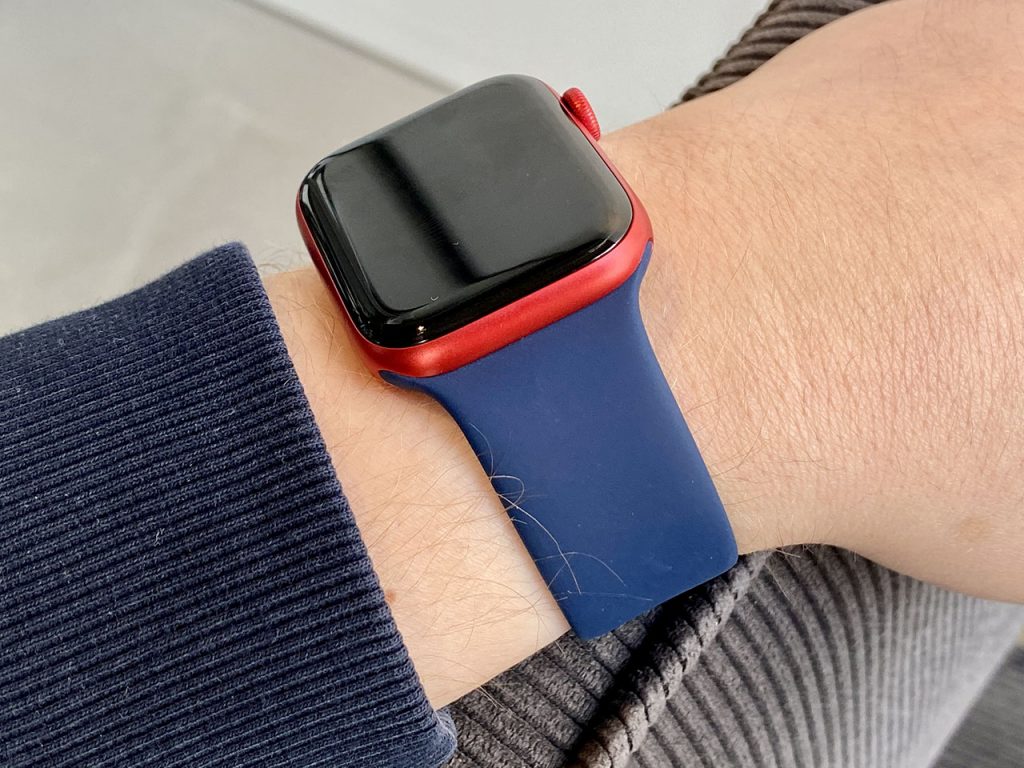
Sleep functions are of course also available, although it currently yields little usable data. Apple seems to want to teach you better sleeping habits and is not out to overwhelm you with all kinds of statistics. The only thing I do find interesting is to see after sleeping how my blood oxygen has changed during the night. But you do need a Series 6 for that.
You’ll be able to do even more with your Apple Watch later this year when Fitness + kicks off. But here also applies: not yet in the Netherlands and Belgium.
Who is the Apple Watch Series 6 for?
Apple has done what it was supposed to do with the Apple Watch Series 6: make an even better smartwatch. It may feel like a minor upgrade from the Series 5 , which in turn was a minor upgrade from the Series 4 .
This ensures that a large group of people can still move forward without having to upgrade. This is also evident from the fact that there is now an Apple Watch SE in the shops, which is missing almost all major innovations since the Series 4, but which, according to Apple, is perfectly suitable for a large target group. We wouldn’t be surprised if the SE turns out to be more popular than the Series 6. And that’s fine. In the past, we found the Series 3 suitable for down-to-earth, budget-conscious users. Now that is the SE.
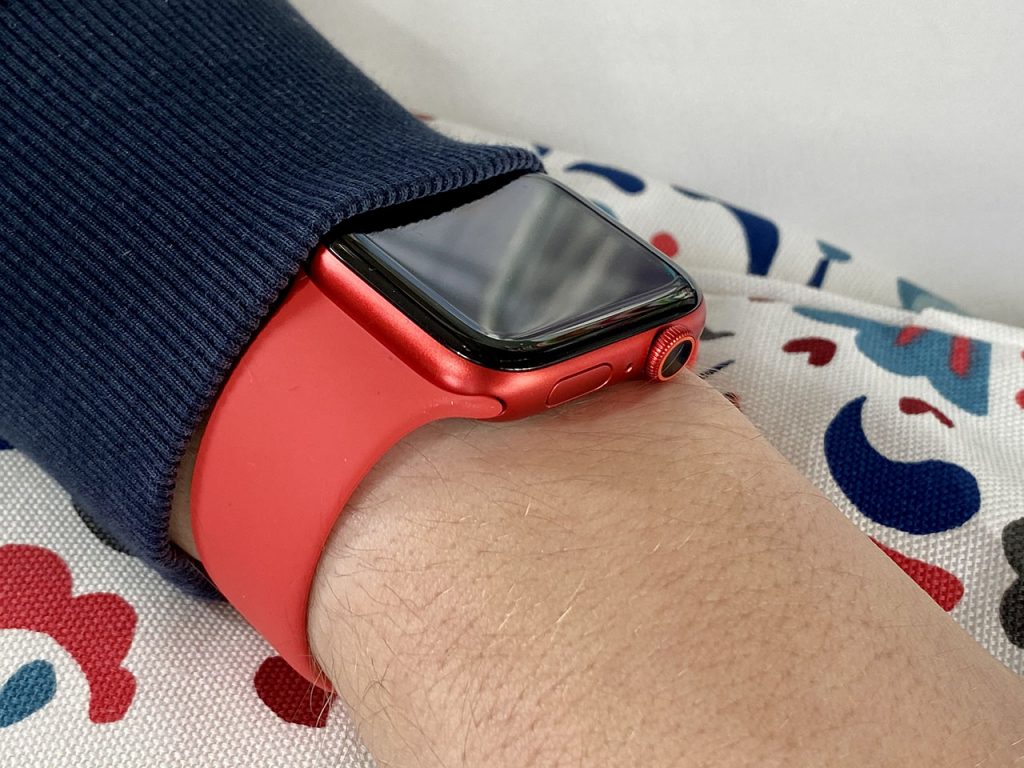
Those who want the most comprehensive functionality will of course choose the Apple Watch Series 6. These are the early adopters, who always want the very latest, but also the people who have good reason to measure Sp02 and height: for example athletes who like to go to great heights train.
Of all the improvements that have been added over the years, the always-on screen is the most useful for healthy people. You hardly use the rest and only come in handy if you have medical reasons, such as a heart defect or balance disorder. You could also opt for the Series 5, although we do find the always-on screen on the Series 6 a lot more pleasant because of the better readability. ECG, pulse oximeter, compass and altimeter are features that most people rarely use. Do you belong to that target group: fine! But it’s nonsense to spend $ 130 too much on something you never use.
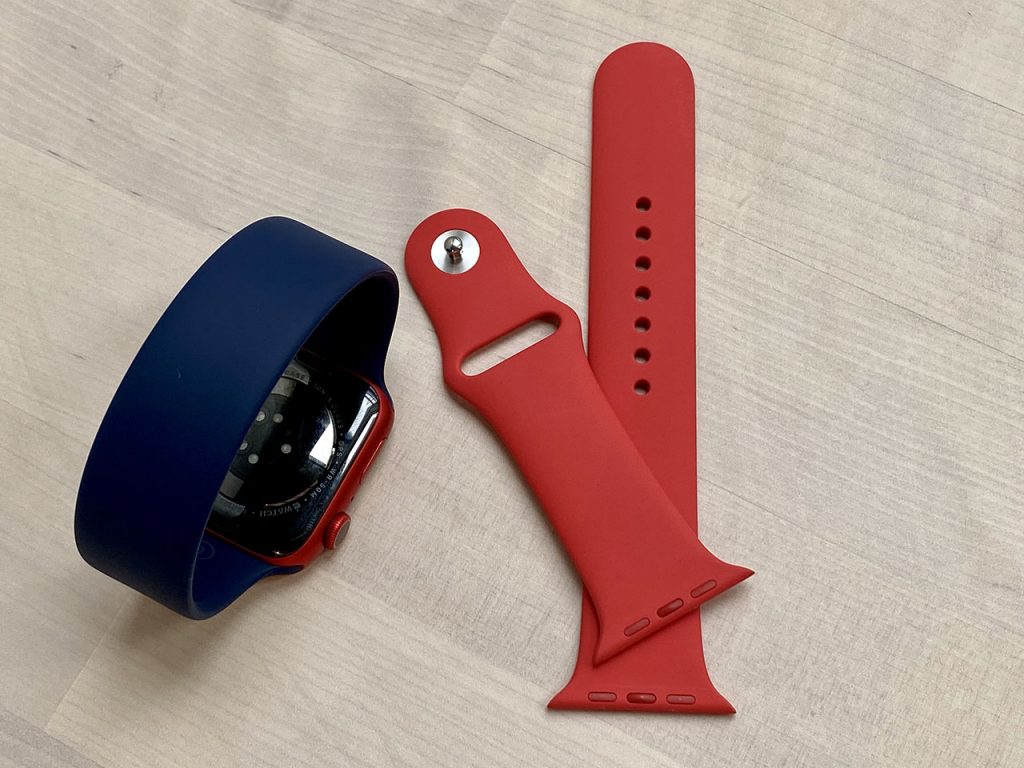
We think it is now really the time to switch to a new model with a Series 3 or older and you can then choose from the Series 6 or the Apple Watch SE. This has to do with the new design and the amount of memory: the Series 3 is already struggling to get watchOS 7 installed and the older models will no longer receive an update at all.
- New colors blue and red, for those who want to stand out
- Charge faster
- Faster S6 processor
- Blood oxygen meter as the biggest innovation
- Always-on screen now even more usable
- Always-on altimeter, for those who need it
- Prepared for the future with U1 chip
CONS-
- In the Netherlands and Belgium still only in aluminum and without 4G
- No major improvements over Series 5
- No improvements in battery life
Conclusion Apple Watch Series 6
In terms of appearance, there is little difference between the Apple Watch Series 6 and its predecessor. The real innovations are within. The improved always-on screen makes it really usable, we are happy with the new colors and the U1 chip could open up unexpected possibilities.
However, whether you need the blood oxygen meter and always-on altimeter is highly questionable. As long as Apple has not received the medical approval, it is not intended to monitor disease and is only interesting for people who exercise at high altitudes. In the Netherlands and Belgium, the options are limited, but there will undoubtedly be people who can use it.
